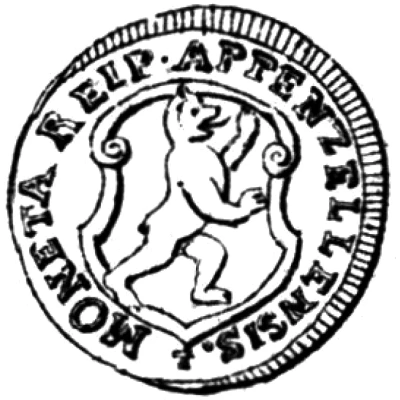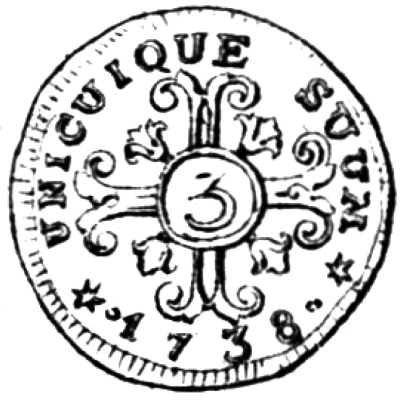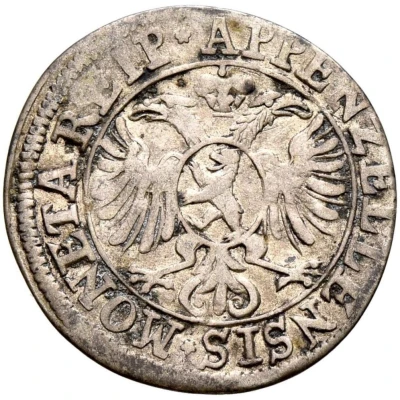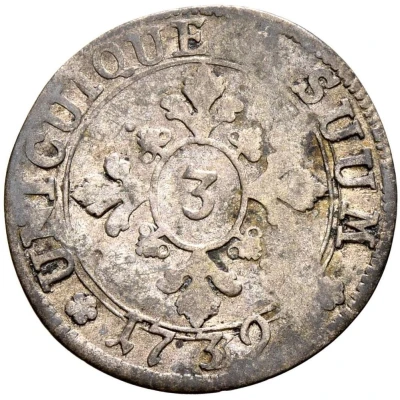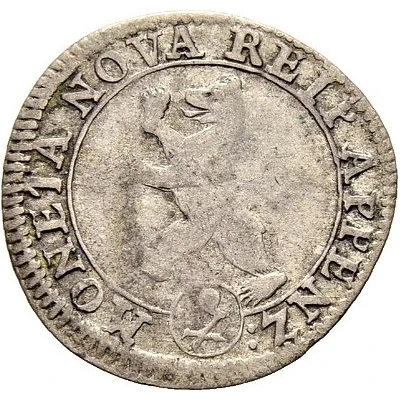
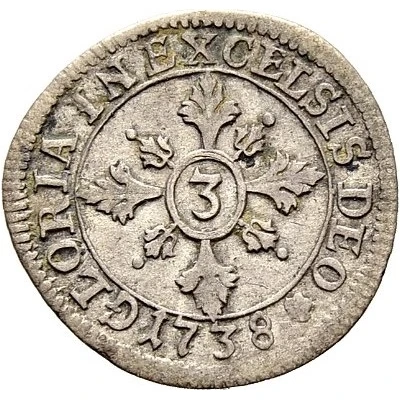

© Sincona AG
3 Kreuzers
1738 year| Billon | 1.26 g | 22 mm |
| Issuer | Canton of Appenzell Innerrhoden |
|---|---|
| Period | Cantonal administration (1597-1798) |
| Type | Standard circulation coin |
| Year | 1738 |
| Value | 3 Kreuzer = 1 Groschen (1⁄40) |
| Currency | Thaler (1737-1744) |
| Composition | Billon |
| Weight | 1.26 g |
| Diameter | 22 mm |
| Shape | Round |
| Demonetized | Yes |
| Updated | 2024-10-07 |
| Numista | N#99128 |
|---|---|
| Rarity index | 100% |
Reverse
Ornate cruciform with value in center, date in legend.
Script: Latin
Lettering:
GLORIA IN EXCELSIS DEO
1738
3
Comment
Examples of this type:⬦Variety #1:
Obverse: circle going through cartouche below bear;
Reverse: large "3";
• Example #1 (1.39g, About Very Fine):
© Image courtesy of Sincona AG
◦ Auctioned by Sincona AG, Auction 44, 25 October 2017, Lot 5019. Sold for 425 CHF.
⬦Variety #2
Obverse: circle stops at cartouche below bear;
Reverse: small "3";
• Example #2 (1.26g, Very Fine):
© Image courtesy of Sincona AG
◦ Auctioned by Sincona AG, Auction 16, 18 October 2013, Lot 5050. Sold for 800 CHF.
• Example #3 (1.26g, Very Fine):
© Image courtesy of Sincona AG
◦ Auctioned by Sincona AG, Auction 26, 14 October 2015, Lot 3705. Starting price 500 CHF, unsold.
⬦Variety #3
Obverse: circle stops at cartouche below bear;
Reverse: large "3";
• Example #4 (1.65g, Very Fine):
© Image courtesy of Sincona AG
◦ Auctioned by Sincona AG, Auction 44, 25 October 2017, Lot 5020. Sold for 1,000 CHF.
Interesting fact
The 3 Kreuzers 1738 coin from the Canton of Appenzell Innerrhoden is interesting because it was minted during a time of great economic and political change in Switzerland. The coin was issued during the reign of Emperor Charles VI, who was instrumental in establishing the Swiss Confederation and promoting trade and commerce throughout Europe. The coin's design, which features the Appenzell Innerrhoden coat of arms and the imperial eagle, reflects the political and cultural ties between the canton and the Holy Roman Empire. Additionally, the use of billon, a silver-copper alloy, was a common practice during this time period, as it was more durable and affordable than pure silver. Overall, this coin provides a unique glimpse into the history and economy of 18th-century Switzerland.
